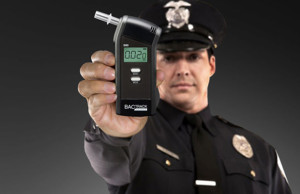Breath samples are frequently relied upon throughout the country in prosecuting citizens for DUI. However, scientific evidence suggests that these breath tests may not be as reliable in accurately calculating a person’s blood alcohol content (BAC) as previously thought.
The level of alcohol in a person’s breath does not directly indicate whether a person is intoxicated. Rather, the quantity of alcohol in a person’s blood and its subsequent interactions with the central nervous system, particularly the brain, is what actually causes intoxication. These breath tests merely take a sample of alcohol present in a person’s breath to approximate the level of alcohol in the person’s blood. All breath testing machines used in the United States use a partition ratio of 2100:1 (210 Liters in a breath sample to 100 milliLiters in the blood) to approximate the relationship between breath tests and BAC. In other words, this ratio assumes that for each molecule of alcohol detected in a given volume of breath, there are 2100 molecules of alcohol in the same volume of blood.
However, a recent comprehensive study notes that a large variance exists in human partition ratios, ranging from 1004:1 to 7289:1, yet in breath test machines everyone is judged by the same standard of 2100:1. Further, another scientific paper discussed how systematic bias will seriously distort the calculated blood/breath ration. Indeed, yet another study found a partition ratio of 1756:1, which caused a 20% discrepancy between the actual measured value and the standard fixed value used by breath test machines. This discrepancy was explained by the loss of alcohol to the lung airway mucosa.
But what does all of this mean? If a person has a partition ratio of 1050:1, which is half of the fixed ratio used in breath test machines, the breath test result may indicate a BAC twice the amount of what a blood test would prove. For example, if this person were given a breath test with a result of .14, they would be over the legal limit and may be charged with DUI. However, the actual BAC of this person would be .07, which would be indicated by a direct blood test. When the difference between going home safe and being charged with DUI hangs in the balance, such a discrepancy between the fixed ratio of the breath test machine and a person’s actual partition ratio is massively important. Another study indicated that roughly 20% of people have a partition ratio lower than 2100:1, which means that when these people take a breath test, the results would indicate that they have a higher BAC than they actually do.
What do you think of the potential inaccuracies of breath tests? Let us know in the comment section below.



















1 comment:
This research, or certainly its results shown here, will be well and truly buried, far too awkward for authorities to live with.
Or contact me privately:
steve@fairlielaw.com
(215) 997–1000